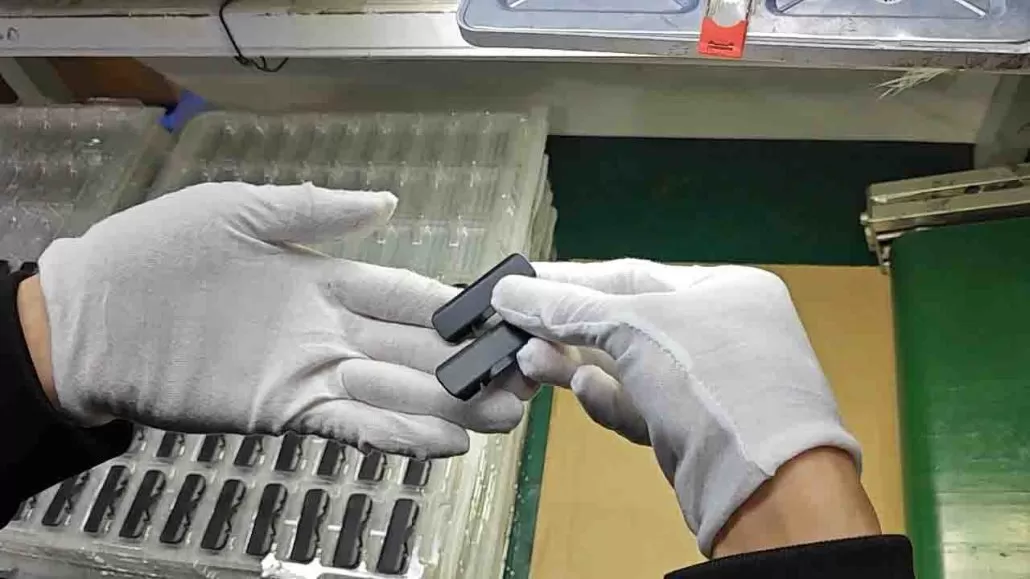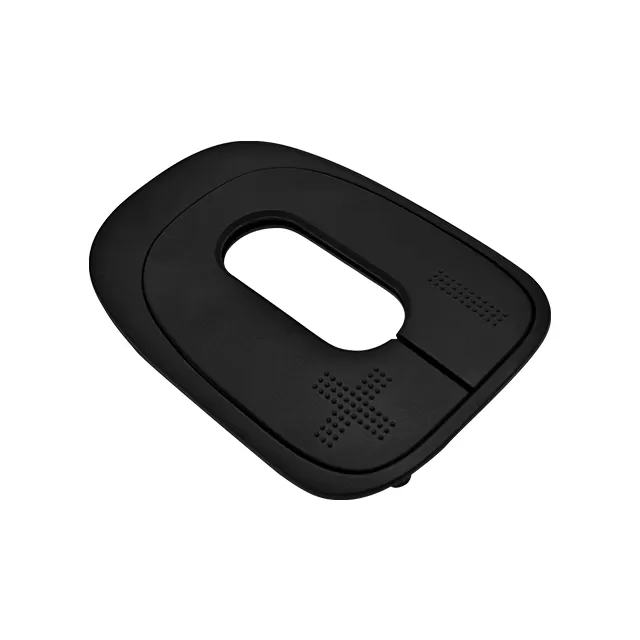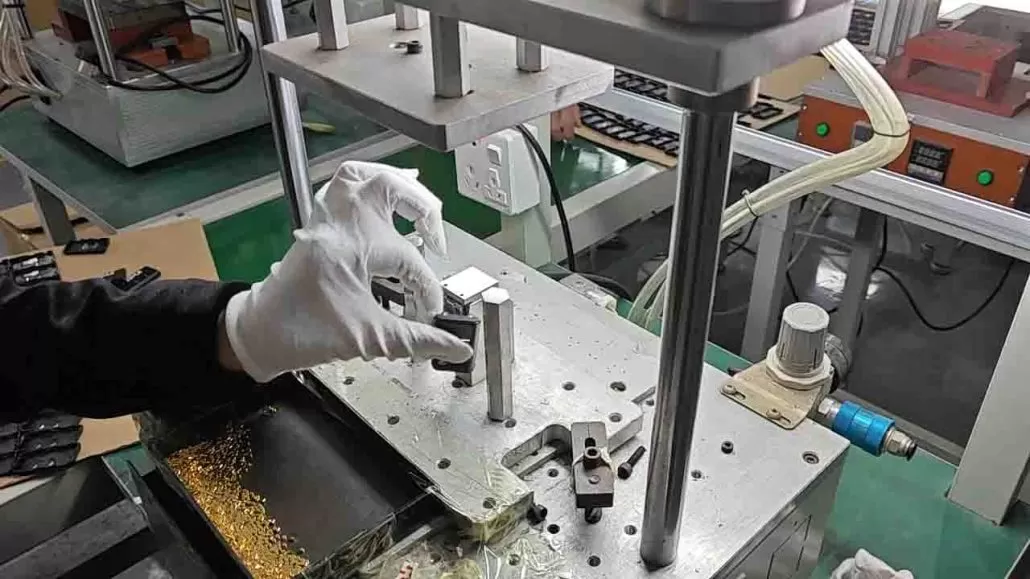Injection molding is one of the most popular methods of manufacturing plastic parts for various industries. With the advent of new technologies and materials, it has grown into a sophisticated process capable of producing high-quality, complex parts. But achieving the perfect finish can be a challenge, especially when it comes to matte finishes that require a smooth, even texture. In this article, we’ll discuss some tips and tricks on how you can achieve a professional matte finish in injection molding.
Understanding the Basics of Injection Molding Matte Finishing
Injection molding has revolutionized the manufacturing industry by providing a way to mass-produce plastic parts with excellent precision and accuracy. However, it’s not just enough to have a great basic mold. To obtain the best finish possible, additional finishing touches are needed. And one such popular option is matte finishing.

What is Injection Molding Matte Finishing?
Injection molding matte finishing is a process that is used to give injection-molded items a matte, non-shiny finish. The process involves the use of abrasive blasting, polishing, and texturing to achieve the desired look and feel.
Why is Matte Finishing Important?
Matte finishing is important for a number of reasons. Firstly, it provides a unique and differentiated look to your products. This can help to increase your marketability and product appeal to potential customers.
Secondly, matte finishing helps to mask or reduce any imperfection or surface marks on your products. This is especially important if your products are intended for use in high-visibility applications or end users paying extra attention to detail.
Finally, matte finishing can improve the mechanical properties of your products. For instance, it can make your products more scratch-resistant and less prone to surface oxidation.
How Can Matte Finishing Benefit Your Products?
Matte finishing can benefit your products in a variety of ways. Here are just a few of the ways that it can provide a significant impact for your products:
- Improved Aesthetics: Matte finishing gives products a sleek, non-shiny finish that looks incredibly modern and stylish.
- Increased Durability: Matte finishing can improve the durability of your products, making them more resistant to wear and tear.
- Better Tactile Features: Matte finishing provides a more tactile feel to products than shiny finishes, making them easier to grip and hold.
- Enhanced Product Appeal: Matte finished products are likely to grab the attention of customers who are looking for unique and high-quality products.
Matte finishing is an excellent option for injection-molded products that seek to differentiate themselves from the typical glossy finish. It creates a unique look that’s both modern and sophisticated, and provides a variety of tangible benefits that can improve the products and end-user experience. If you are considering using injection molding matte finishing for your products, be sure to consult custom injection molding services to ensure that you obtain the best possible results for your products.
Choosing the Right Injection Molding Materials
As a provider of custom injection molding services, you know that selecting the appropriate materials for your products is critical to achieving high-quality results. The right materials can enhance the performance, durability, and aesthetics of your parts, while the wrong ones can cause defects, failure, and waste. Therefore, it’s crucial to have a deep understanding of the properties, characteristics, and options of injection molding materials, and how they align with your design requirements, manufacturing process, and budget.

Introduction: What Is Injection Molding and Why Is Material Selection Important?
Before we dive into the details of injection molding materials, let’s review the basics of injection molding and why material selection matters. Injection molding is a manufacturing process that involves melting thermoplastic or thermosetting materials and injecting them into a mold cavity under high pressure and temperature. Once the material cools and solidifies, the mold is opened, and the part is ejected. Injection molding is widely used in various industries, such as automotive, aerospace, medical, consumer goods, and electronics, to produce complex, precise, and scalable components. However, the quality of the parts depends not only on the design and molding conditions but also on the choice of materials. Material selection affects the mechanical, physical, chemical, thermal, and optical properties of the parts, as well as their cost, recyclability, and environmental impact. Therefore, selecting the right materials is crucial to achieving optimal performance, functionality, and sustainability of your products.
Factors to Consider When Choosing Injection Molding Materials
In this section, we will go through the key factors you should consider when selecting injection molding materials. These factors are:
- Part design and function
- Material properties and characteristics
- Manufacturing process and equipment
- Regulatory and industry standards
- Cost and availability
- Environmental and social impact
For each factor, we will explain its relevance to material selection and provide examples of how to apply it in practice. You will learn how to analyze your part requirements, match them with material properties, evaluate the suitability of different materials, check their compliance with regulations and standards, balance the cost and quality considerations, and assess their impact on the environment and society.
Types of Injection Molding Materials
In this section, we will introduce you to the types of materials commonly used in injection molding and describe their properties, advantages, and limitations. We will cover the following categories:
- Thermoplastics
- Thermosets
- Elastomers
- Composites
- Biodegradable and renewable plastics
- Specialty materials
For each category, we will provide an overview of the materials it includes, their chemical and physical properties, their applications, and their pros and cons. You will learn which materials are suitable for high-temperature or high-strength applications, which ones offer good impact resistance or flexibility, which ones are bio-based or compostable, and which ones require special handling or storage.
Best Practices for Material Selection in Injection Molding
In this section, we will give you some best practices for material selection in injection molding, based on our experience and knowledge. These practices are:
- Start with a clear understanding of your part requirements and constraints
- Involve your material suppliers and testing labs early in the design stage
- Consider multiple candidate materials and evaluate them objectively
- Test the selected materials thoroughly and document the results
- Monitor and adjust the molding process to optimize the material performance
- Continuously improve your material knowledge and expertise
For each practice, we will explain its rationale and provide tips on how to implement it effectively. You will learn how to communicate with your customers and suppliers, how to use data and tools to compare materials, how to conduct tests and experiments, how to troubleshoot and optimize your process, and how to stay updated on the latest material developments and trends.
In this article, we have shown you why selecting the right injection molding materials is vital for achieving high-quality, cost-effective, and sustainable products. We have presented you with a comprehensive guide to the factors, types, and best practices of material selection, and how they relate to your custom injection molding services. We hope that you have gained valuable insights and ideas to improve your material selection process and enhance your customer satisfaction. If you have any questions or comments, please feel free to contact us at [Longsheng Technology:info@longshengmfg.com]. We are always here to support your success in injection molding.

Adjusting the Injection Molding Process
As a manufacturer, you understand the importance of producing quality products while maximizing efficiency. One way to achieve this goal is by fine-tuning your injection molding process.
Injection molding is a highly precise and efficient manufacturing process that involves injecting heated material into a mold cavity. The material then cools and solidifies, resulting in a finished product. There are several factors that impact the quality and efficiency of this process, including:
- Material selection: The choice of material to be injected into the mold cavity is critical. The material must be able to flow easily into the mold and solidify quickly. Materials with a high melt flow index (MFI) are ideal for injection molding.
- Temperature: The temperature of the material and the mold has a significant impact on the process. The material must be heated to the appropriate temperature to ensure it flows easily into the mold. The mold temperature must also be carefully controlled to avoid warping and cracking.
- Pressure: The pressure at which the material is injected into the mold is crucial. Too much pressure can cause the material to warp, while too little pressure can result in voids and other defects.
- Cooling: The cooling rate of the material is also important. The material must cool sufficiently to solidify but not so quickly that it causes shrinkage or warping.
By making adjustments to these and other factors, you can improve the quality and efficiency of your injection molding process. Here are some tips on how to get started:
- Analyze your process: Take a close look at your current injection molding process. Identify areas where you can make improvements and set goals for quality and efficiency.
- Experiment with material and temperature: Test different materials and temperatures to find the optimal combination for your product. Remember that each material has its own set of characteristics, and the temperature must be carefully controlled to avoid defects.
- Review your tooling: The molds and tooling play an integral role in the injection molding process. Regular maintenance and repair can help to ensure consistent results.
- Monitor and adjust: Continuously monitor the injection molding process and make adjustments as needed. Use data to identify trends and areas for improvement.
At Longsheng Technology, we specialize in custom injection molding services. Our experienced team can help you optimize your injection molding process for better quality and efficiency. Contact us today to learn more.
Injection Molding Additional Tips and Tricks
Injection molding is a cost-effective method to produce high-quality plastic parts quickly and efficiently. Its versatility is unmatched, as it can be used to create anything from medical devices to automotive parts. While the process seems straightforward, there are tips and tricks that can help ensure the success of your injection molding projects.
Here are some tips and tricks to improve your injection molding process:
1.Material Selection
Choosing the right material for your injection molding project is crucial. The material properties will affect the final product’s strength, durability, and appearance. There are a variety of materials available, ranging from standard thermoplastics to specialty materials. Some common materials used in injection molding include:
- Polyethylene
- Polypropylene
- Acrylonitrile Butadiene Styrene (ABS)
- Polycarbonate
- Nylon
Working with a custom injection molding service can help you select the right material for your project.
2.Injection Molding Design
Designing for injection molding is different from other manufacturing methods. Creating a mold requires specific design parameters, such as draft angles, wall thicknesses, and parting lines. Designing for moldability can ensure the success of your project and reduce the risk of production issues.
3.Tooling Considerations
Tooling is an essential part of the injection molding process. Proper tooling can improve efficiency, reduce cycle time, and increase part quality. Investing in well-made tooling can help reduce the likelihood of production issues.
4.Machine Settings
Setting the proper machine parameters can affect part quality, cycle time, and the overall success of your project. Machine settings, such as temperature and pressure, must be carefully calibrated to achieve a high-quality end product.
5.Maintenance
Regular maintenance can ensure that your injection molding machine is operating at its best. Preventative maintenance can help avoid unplanned downtime and reduce the chance of production issues.
Finally, there are a few additional tips and tricks to take into account when attempting to achieve a professional matte finish in injection molding:
- Make sure the tooling is properly maintained to ensure the best possible finish.
- Consider using a gloss enhancing spray to enhance your matte finish.
- Finally, keep the surface clean from fingerprints to ensure no oil or dirt gets on the mold surface, interfering with the desired texture.
By using the correct materials, adjusting the injection molding process, and paying special attention to the processing process, professional matte injection molding can be achieved. By following these steps, you will be able to create a perfect matte finish for your company. If you need professional injection molding services, please do not hesitate to contact us today [Longsheng Technology] to learn more about our services.

